Natural Solutions to Things That Bug You (15 page)
Read Natural Solutions to Things That Bug You Online
Authors: Myles Bader

GIVE THEM A HOTFOOT
A relatively new method employs heat to kill the colony. A portable propane heater blows hot air into a tented home. The temperature reaches 150
F, which is needed to acquire the minimum kill temperature of 120
F. The termites can only survive for about 20 minutes at this temperature.
However, this does kill a number of the beneficial insects that might be living in the home as well as the bad insects. Computers, chocolates, some plastics and certain pharmaceutical medications must be removed from the house. This is usually completed in one day.
ZAP, ZAP, ZAP
You can also use Electro-Gun™ to electrocute them and hot air treatments for the entire house. This is manufactured by the Etex Company and can be leased to zap the termites. It is used against drywood termites and can also be used to kill powderpost beetles.
It literally zaps them with and electrical charge but can only be used in parts of the home that you can get to. The arc of electrical current is shot directly into the burrow and then travels along the moist tunnels killing the termites. This pulsed high frequency current does not damage the wood in any way.
TERMITE-PROOFING YOUR HOME
Never allow the paint on the outside of the home to deteriorate and expose the wood.
Never allow any wood to come into contact with the soil or a bush.
Never leave any tools or other objects leaning against the house for any length of time. This includes planter boxes.
Never have any wooden trellises attached to the house and touching the ground.
Be sure that all firewood is stacked on a cement base with adequate room around it. If you do find termites burn the wood as soon as possible or pour soapy water on it to kill them.
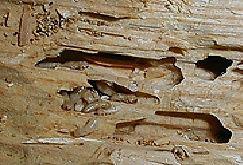
Check stumps that are near the house regularly.
If you have a crawl space under your home, be sure that it is kept as dry as possible.
Shrubbery next to a home is one of the most common entry points for termites.
Repair all cracks in concrete or masonry.
Check any separation in wood joints; they should be inspected on a regular basis.
Trees that overhang your roof are a great entry point for termites.
PUT OUT THE STOP SIGNS
Ant activity in the home tends to increase 5-10 minutes before sundown and is at its busiest between 10PM and 2AM; however, some species prefer to be active from 8PM to 4AM in some parts of the country. The temperature and rainfall does not affect the ant’s activity.
GIVE THEM A DOSE OF CASTOR OIL
Use the castor oil plant and soak the green seeds, leaves and the roots in 2 quarts of water for 24 hours, then strain and use in a sprayer or use as a drench if you know where their nest is. The seeds and leaves can be dried and used as a powder.
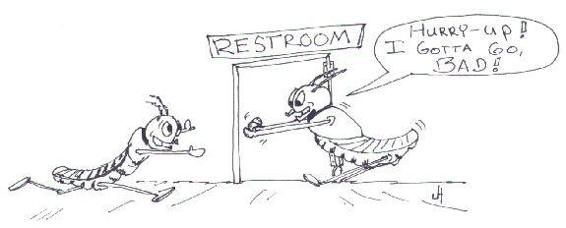
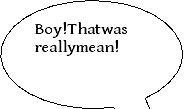
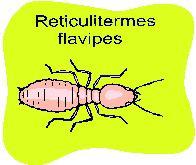
CHAPTER 3
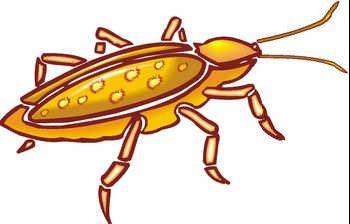
COCKROACHES
COCKROACHES
A ROACH BY ANY OTHER NAME, IS STILL A ROACH
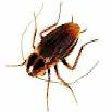 Roaches do not mind living outside, but if you give them a chance, they will move in with their whole family. Roaches are known by a number of different names, such as water bugs, palmetto bugs and cockroaches.
Roaches do not mind living outside, but if you give them a chance, they will move in with their whole family. Roaches are known by a number of different names, such as water bugs, palmetto bugs and cockroaches.
They are bugs of the night and will go looking for any drop of water or food that may be within their grasp, since they are not fussy eaters. Outside they will take up residence almost anywhere, such as a tree, woodpile, planter, under rocks, etc. In many instances roaches will find a warm, damp location, which is where they prefer to breed.
Cleanliness will reduce or eliminate most roach problems, but frequent professional spraying if a problem exists by an expert or placing out bait also works well. Roaches will not come back to an area where they are frequently poisoned.
Cockroaches can be found all over the world and are going strong. They can be controlled or eradicated but it will take some effort. The best method of controlling cockroaches is to have a clean kitchen. Any small piece of food or readily accessible water source will be located.
Americans spend about 1.5 billion dollars annually trying to get rid of cockroaches, but to no avail. The roaches are now becoming resistant to most pesticides and chemicals.
There are over 3800 species of cockroaches worldwide and they have been around for 360 million years. People who are allergic to house dust will be allergic to cockroaches, since parts of their bodies when they die become mixed with house dust. Asthma can be induced from cockroach dust particles in susceptible individuals.
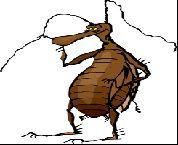
The roach can identify poisons with their fine sensory hairs and will avoid areas that have been baited with poisons. In the late 1800’s people would place a mirror in front of a cockroach and felt that its reflection would scare it away.
Threats are real!
Cockroaches in general have been reported to spread approximately 33 kinds of bacteria, at least six kinds of parasitic worms and seven other kinds of human pathogens. They pick up the germs on the spines of their legs and bodies as they crawl through decaying matter, garbage or sewage and then carry these into food or onto food surfaces.
Germs that cockroaches consume from decaying matter, garbage or sewage are protected while in their bodies and can remain infective for several weeks longer than if they had been exposed to cleaning agents, rinse water, or just sunlight and air. Recent medical studies have shown that cockroach allergens cause allergic reactions in children. They were also shown to cause asthma in children. These allergens will build up in deposits of droppings, secretions, cast skins and dead bodies of roaches.
The most common roach’s in the United States